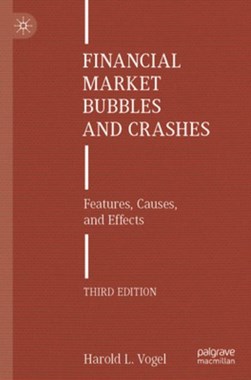-
BROWSE 1000s OF BOOKS IN STOCK
-
FREE DELIVERY ON ORDERS OVER €10
Financial market bubbles and crashes
PAPERBACK
Economists broadly define financial asset price bubbles as episodes in which prices rise with notable rapidity and depart from historically established asset valuation multiples and relationships. Financial economists have for decades attempted to study and interpret bubbles through the prisms of rational expectations, efficient markets, equilibrium, arbitrage, and capital asset pricing models, but they have not made much if any progress toward a consistent and reliable theory that explains how and why bubbles (and crashes) evolve and are defined, measured, and compared. This book develops a new and different approach that is based on the central notion that bubbles and crashes reflect urgent short-side rationing, which means that, as such extreme conditions unfold, considerations of quantities owned or not owned begin to displace considerations of price.
€79.74

239 Reward Points
In stock online
Extended Range: Delivery in 2-3 working days
Extended Range: Delivery in 2-3 working days
Free Delivery on this item
Any purchases for more than €10 are eligible for free delivery anywhere in the UK or Ireland!
Economists broadly define financial asset price bubbles as episodes in which prices rise with notable rapidity and depart from historically established asset valuation multiples and relationships. Financial economists have for decades attempted to study and interpret bubbles through the prisms of rational expectations, efficient markets, equilibrium, arbitrage, and capital asset pricing models, but they have not made much if any progress toward a consistent and reliable theory that explains how and why bubbles (and crashes) evolve and are defined, measured, and compared. This book develops a new and different approach that is based on the central notion that bubbles and crashes reflect urgent short-side rationing, which means that, as such extreme conditions unfold, considerations of quantities owned or not owned begin to displace considerations of price.

239 Reward Points
Any purchases for more than €10 are eligible for free delivery anywhere in the UK or Ireland!
€79.74

239 Reward Points
Any purchases for more than €10 are eligible for free delivery anywhere in the UK or Ireland!
Product Description
Economists broadly define financial asset price bubbles as episodes in which prices rise with notable rapidity and depart from historically established asset valuation multiples and relationships. Financial economists have for decades attempted to study and interpret bubbles through the prisms of rational expectations, efficient markets, equilibrium, arbitrage, and capital asset pricing models, but they have not made much if any progress toward a consistent and reliable theory that explains how and why bubbles (and crashes) evolve and are defined, measured, and compared. This book develops a new and different approach that is based on the central notion that bubbles and crashes reflect urgent short-side rationing, which means that, as such extreme conditions unfold, considerations of quantities owned or not owned begin to displace considerations of price.
Product Details
ISBN9783030791841
FormatPAPERBACK
PublisherPALGRAVE MACMILLAN (19 December. 2022)
No. of Pages579
Weight961
Language English
Dimensions 235 x 155 x 41

